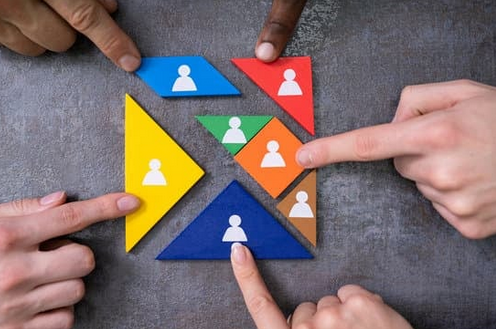Investigating Intersectionality: LGBTQI persons with disabilities
Intersectionality is a crucial perspective to take into account when talking about disability. But, first, what does it mean? It is a valuable tool of analysis to map the intersection between identity characteristics associated with patterns of socially engendered disadvantage, with the aim to better pinpoint the experiences of persons facing multilayered adversity. In fact, inequalities faced by persons with disabilities may be amplified by other factors, in this case identifying as part of the LGBTQI (lesbian, gay, bisexual, transgender and intersex) community, so it is essential to move beyond generalisations and delve into the nuanced realities that impact their lives.
To raise awareness of the challenges LGBTI persons with disabilities face, ILGA-Europe and the European Disability Forum (EDF) have published their latest research report ‘Intersections’. This report analyses the most relevant data on the socio-economic conditions of LGBTQI persons with disabilities in Europe, by looking at different variables:
- Poverty,
- Homelessness,
- Employment,
- Access to healthcare services,
- Experiences of discrimination, violence, and harassment.
Overall, the trend is concerning: LGBTI persons with disabilities are at higher risks of poverty, homelessness, exclusion, discrimination, and violence in comparison to all respondents. These results also reveal that LGBTI persons with disabilities encounter barriers in accessing healthcare services, including being subject to inappropriate comments. This is no news, as was already widely discussed by expert stakeholders at the EESC hearing in March 2023. Clearly, we must continue to advocate for an effective implementation of the European Disability Strategy 2021-2030 which aims to make sure that persons with disabilities have access to health services on an equal basis with others. Combating all forms of discrimination against persons with disabilities is at the heart of the UNCRPD so it is imperative that the EU continues to improve this situation, especially for those individuals subject to double discrimination.
To address these issues, ILGA-Europe and EDF propose 3 straightforward recommendations to States and institutions:
- Systematically collect disaggregated equality data that includes sexual orientation, gender identity and expression and sex characteristics in relation to disability, socio-economic status, discrimination and violence;
- Increase visibility of LGBTI persons with disabilities and address the policy gaps they face;
- Involve DPOs and PWDs in development design and implementation of program and policies.
This is highly relevant for EASPD and its members who have the potential to design and champion models of truly inclusive services, which account for the specific needs of LGBTQIA+ persons with disabilities. Describing and managing multiple layers of identity is a complex and nuanced endeavour but we cannot risk remaining complacent about it. In turn, this will pave the way to better identify and respond to practices of discrimination which persist in violation of EU and international legislation, primary amongst which is the UN CRPD. The next step should also be to ensure there are adequate channels for accountability and that all relevant actors are committed to eradicating exclusion in social and support care.
Data Source Background
The survey was conducted online in 27 EU Member States, the UK, Serbia and North Macedonia between May and July of 2019. LGBTI people with disabilities was a subset from the entire sample of respondents resulting in a sample size of 7,019 (5.02% of the total respondent population of 139,799 respondents).
Over the last year, ILGA-Europe have been partnering with a variety of NGOs in the region to analyse the FRA 2019 LGBTI Survey II data and pull out experiences of those experiencing intersectional marginalisation. In this specific issue, the European Disability Forum provided their contribution.
The full report is free for download in the following link: https://www.ilga-europe.org/files/uploads/2023/12/FRA-Intersections-Report-Disabilities.pdf



